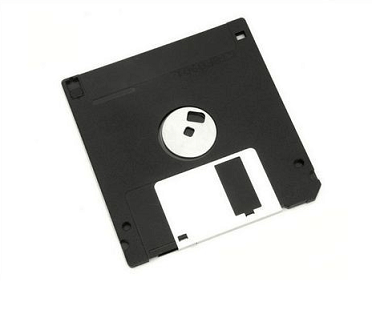Windows cannot write to a Mac formatted floppy disk (without help), but Mac can read a Windows formatted floppy disk if it's formatted in FAT and not NTFS. While Macs and PCs use the size floppy disks, the file system format is different. So what you can do is download the files using your PC and put them onto a FAT16 floppy disk. I'm trying to write my OS to an floppy disk, but when i try to boot up, Bochs says that i don't have any OS on that floppy, here is the command that i'm using to write: #1 Try: C: Assembly DEBUG os.asm -w 100 0 0 1 -q #2 Try: C: Assembly DEBUG os.bin -w 100 0 0 1 -q. Here is my source code.
Bootable floppy disks are generally used as a last resort to boot theinstaller on hardware that cannot boot from CD or by other means.

Booting the installer from floppy disk reportedly fails on Mac USBfloppy drives.
Disk images are files containing the complete contents of a floppydisk in raw form. Disk images, such asboot.img, cannot simply be copied to floppydrives. A special program is used to write the image files to floppydisk in raw mode. This is required because theseimages are raw representations of the disk; it is required to do asector copy of the data from the file onto thefloppy.
There are different techniques for creating floppies from disk images.This section describes how to create floppies from disk images ondifferent platforms.
Before you can create the floppies, you will first need to download themfrom one of the Debian mirrors, as explained inSection 4.2, “Downloading Files from Debian Mirrors”.
No matter which method you use to create your floppies, you shouldremember to flip the write-protect tab on the floppies once you havewritten them, to ensure they are not damaged unintentionally.

4.3.1. Writing Disk Images From a Linux or Unix System
To write the floppy disk image files to the floppy disks, you willprobably need root access to the system. Place a good, blank floppyin the floppy drive. Next, use the command
where filename is one of the floppy disk imagefiles./dev/fd0 is a commonly used name of the floppydisk device, it may be different on your workstation.The command may return to theprompt before Unix has finished writing the floppy disk, so look forthe disk-in-use light on the floppy drive and be sure that the lightis out and the disk has stopped revolving before you remove it fromthe drive. On some systems, you'll have to run a command to eject thefloppy from the drive .
Some systems attempt to automatically mount a floppy disk when youplace it in the drive. You might have to disable this feature beforethe workstation will allow you to write a floppy in rawmode. Unfortunately, how to accomplish this will varybased on your operating system.
Write Bin Files To Floppy Drive
If writing a floppy on powerpc Linux, you will need to eject it. Theeject program handles this nicely; you might needto install it.
4.3.2. Writing Disk Images From DOS, Windows, or OS/2
If you have access to an i386 or amd64 machine, you can use one of thefollowing programs to copy images to floppies.
The rawrite1 and rawrite2 programscan be used under MS-DOS. To use these programs, first make sure that youare booted into DOS. Trying to use these programs from within a DOS box inWindows, or double-clicking on these programs from the Windows Explorer isnot expected to work.
Write Bin Files To Floppy Drives
The rwwrtwin program runs on Windows 95, NT, 98, 2000,ME, XP and probably later versions. Assassin%27s creed 2 google drive. To use it you will need to unpackdiskio.dll in the same directory.
These tools can be found on the Official Debian CD-ROMs under the/tools directory.
An AppleScript, Make Debian Floppy, isavailable for burning floppies from the provided disk image files. Itcan be downloaded fromftp://ftp2.sourceforge.net/pub/sourceforge/d/de/debian-imac/MakeDebianFloppy.sit. Touse it, just unstuff it on your desktop, and then drag any floppyimage file to it. You must have Applescript installed and enabled inyour extensions manager. Disk Copy will ask you to confirm that youwish to erase the floppy and proceed to write the file image to it.
You can also use the MacOS utility Disk Copydirectly, or the freeware utility suntar. Theroot.bin file is an example of a floppyimage. Use one of the following methods to create a floppy from thefloppy image with these utilities.
If you are creating the floppy image from files which were originallyon the official Debian GNU/Linux CD, then the Type and Creator are already setcorrectly. The following Creator-Changer steps areonly necessary if you downloaded the image files from a Debian mirror.
What Is A Bin Files
ObtainCreator-Changerand use it to open the
root.binfile.Change the Creator to
ddsk(Disk Copy), and theType toDDim(binary floppy image). The case issensitive for these fields.Important: In the Finder, use
GetInfoto display the Finder information about the floppyimage, and “X” theFile Lockedcheck box sothat MacOS will be unable to remove the boot blocks if the image isaccidentally mounted.Obtain Disk Copy; if you have a MacOS system or CD itwill very likely be there already, otherwise tryhttp://download.info.apple.com/Apple_Support_Area/Apple_Software_Updates/English-North_American/Macintosh/Utilities/Disk_Copy/Disk_Copy_6.3.3.smi.bin.
Run Disk Copy, and select Utilities → Make a Floppy, then select thelocked image file from the resulting dialog. Itwill ask you to insert a floppy, then ask if you really want to eraseit. When done it should eject the floppy.
Obtain suntar from . Start the suntar program and select“Overwrite Sectors..” from the
Specialmenu.Insert the floppy disk as requested, then hit Enter (start atsector 0).
Select the
root.binfile in the file-opening dialog.After the floppy has been created successfully, select File → Eject.If there are any errors writing the floppy, simply toss that floppy andtry another.
Write Bin Files To Floppy Drive
Before using the floppy you created, set the write protecttab! Otherwise if you accidentally mount it in MacOS,MacOS will helpfully ruin it.